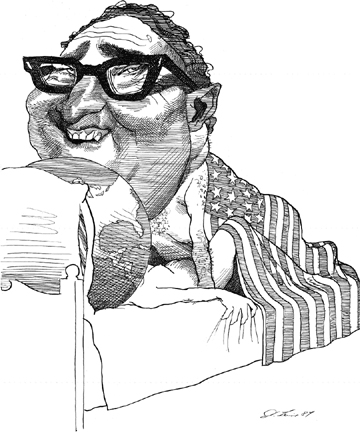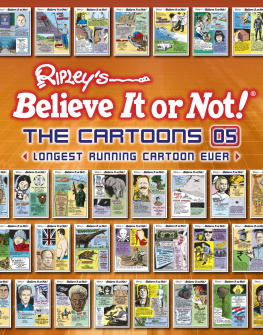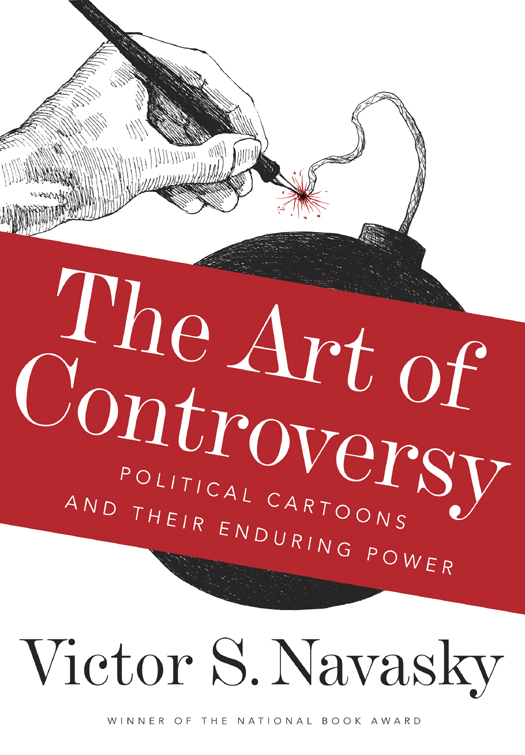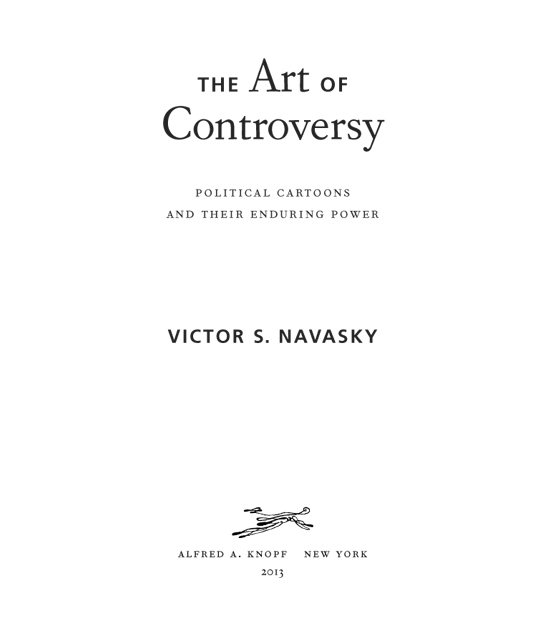THIS IS A BORZOI BOOK
PUBLISHED BY ALFRED A. KNOPF
Copyright 2013 by Victor S. Navasky
All rights reserved. Published in the United States by Alfred A. Knopf,
a division of Random House, Inc., New York, and in Canada by
Random House of Canada Limited, Toronto.
www.aaknopf.com
eBook ISBN: 978-0-307-96214-0
Hardcover ISBN: 978-0-307-95720-7
Knopf, Borzoi Books, and the colophon are registered trademarks of
Random House, Inc.
Grateful acknowledgment is made to The Nation magazine for permission to reprint excerpts from Letters to the Editor (1988) by Jules Feiffer, J. C. Suares, Robert Grossman, and Bill Charmatz; and The Grim Reaper (1933) by Georges. Reprinted with permission of The Nation magazine. For subscription information, call 1-800-333-8536. Portions of each weeks Nation magazine can be accessed at http://www.thenation.com.
Library of Congress Cataloging-in-Publication
Data Navasky, Victor S.
The art of controversy : political cartoons and their enduring power /
Victor S. Navasky.
pages cm
Includes index.
ISBN 978-0-307-95720-7 (hardback)
1. Political cartoons. I. Title.
NC1763.P66N38 2013
320.0207dc23
2012038247
Cover design by Jason Booher
Manufactured in the United States of America
v3.1
To Milo, Gideon, Victor, Izzy,
and the New World a-Comin
One picture is worth ten thousand words.
Chinese proverb (perhaps wrongly attributed to
Confucius, but if he didnt say it, he should have)
My subject had become a victim and his dark features blackened, resembling my drawing even more.
RALPH STEADMAN, 1970
Engravings or lithographs act immediately upon the imagination of the people, like a book which is read with the speed of light; if it wounds modesty or public decency the damage is rapid and irremediable.
French interior minister, FRANOIS RGIS DE LA
BOURDONNAYE, COMTE DE LA BRETCHE ,
September 8, 1829
A good caricature, like every work of art, is more true to life than reality itself.
ANNIBALE CARRACCI
A caricature is putting the face of a joke on the body of a truth.
JOSEPH CONRAD
Contents
Introduction
I n something like thirty years at first as the magazines editor, then as owner and publisher, only once did the staff march on my office with a petition demanding that we not publish something. That something was a cartoon, a caricature.
At the time (February 1984) I thought that the staffs anger had to do primarily with the fact that they thought the cartoon in question was politically incorrect (or in the argot of the day un-PC). No matter that the caricaturist was the late David Levine, perhaps Americas, if not the worlds, leading practitioner. And no matter that his caricature was a powerful work of art. Indeed, that was the problem.
It all started with a phone call from David, known to me as a former contributor to Monocle, a leisurely quarterly of political satire (which meant it came out twice a year) I had founded as a student at Yale Law School in the late 1950s. By now he was known to his fellow artists as one of the great (if unfashionable) realist painters. He was known to the media and intellectual communities as the genius responsible for the artfully witty but wicked crosshatched pen-and-ink caricatures that had helped define the look of the prestigious New York Review of Books since its founding in 1963.
David called because he had done a caricature of an American-flag blanket. Were we interested? David, I said, it will get me in all sorts of trouble with my staff, but send it over. Why will it get you in trouble with your staff? he asked. I dont know, I said, but I know it will.
The cartoon arrived an hour later. It was, as expected, a magnificent caricature. But the look on Kissingers face, mingling ecstasy and evil from behind thick black horn-rimmed glasses, made it somehow more than just a caricature; it seemed to capture Kissingers complicated soul. I called David and with enthusiasm told him we would publish his drawing. Two hours later, the petition landed on my desk, signed by twenty-five people in an office that I had thought employed only twenty-three. Many of the signatures were followed by little comments. Sexist! one had written. Why isnt he doing it to a Third World male? asked another.

David Levine, Screwing the World (1984)
I called an office-wide meeting. At the outset, I told everyone that it was important to keep three things in mind: First, although I took the staff concern seriously, there would be no vote at the end, because you cant, or at least shouldnt, decide a question of aesthetics by majority vote. (Lucky for me, no one asked, Why not?) Second, this work had been offered to us on a take-it-or-leave-it basis, so while anyone was free to say whatever he or she pleased, suggestions to change the drawing would have no operative effect. Third, because I had already told Levine that we intended to use his drawing, although the magazine could always change its mind, I thought that a decision not to use it would have about it the whiff of censorship, fairly or not.
The most articulate staff objection to Levines drawing was that The Nation was supposed to fight against stereotypes, and this cartoon reinforced the stereotype that sex was dirty and something that an active male on top does to a passive woman on bottom. My favorite moment came when our then-columnist Christopher Hitchens said he thought that the cartoon was not about an act of sex, but about an act of rape, Kissinger ravaging the world. But if you look at the womans hand, replied the young woman who had made the point about stereotypes, it seems to be gripping the mattress in what could be the grip of passion. The white-suited, suave, British-born Christopher, who in those days enjoyed playing the office rou, leaned over and, gripping the young womans hand, said, Trust me, my dear, its not the grip of passion. The discussion, sometimes tense, lasted for a couple of hours, and at my suggestion we invited Levine to join the conversation a few days later, when it was resumed.
David pointed out that as a caricaturist he dealt in stereotypeswhich poses a problem when one is rendering, for example, members of a minority race. How do you make a comment on racism without falling into its trap? Nevertheless, its the cartoonists job to play off of stereotypes that a majority of readers and viewers will recognize. David being David, he also said all the wrong things. When asked why the man had to be on top, for example, he replied (in a room that included people of various sexual preferences), Im just showing what normal people do.
After he had spent two hours on the griddle, having been shown not a jot of deference, I asked him whether he was sorry he came. Levine said he had been doing this work for twenty-five years and had never had such a serious discussion of it, and for that he was grateful. He had gotten some new insights into the problematics of cartooning. But he added, If I had it to do again, I wouldnt change a line. I think its one of the strongest pieces Ive ever done.
My thought at the time was that beyond the political objections, the staffs emotional reaction (which I saw as overreaction) was probably a delayed protest over my general failure to consult as much as I might have, or my generational insensitivity to matters of sexual politics. Looking back, I can see that in underestimating the power of Levines








